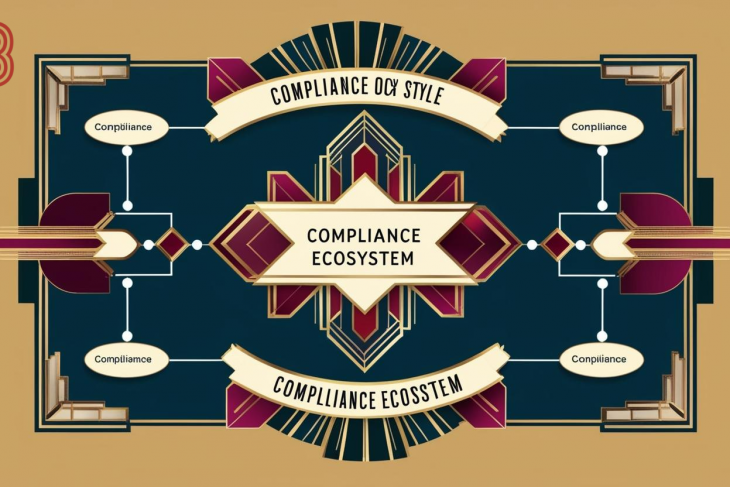
Introduction
Anti-Money Laundering (AML) frameworks are the backbone of global financial security. Designed to prevent the illicit flow of funds derived from criminal activities, AML systems protect the integrity of financial institutions and the wider economy. However, despite sophisticated legislation and evolving technologies, significant risks remain in both AML processes and the supervision of compliance programs. Understanding these risks is essential for regulators, financial institutions, and policymakers to design more resilient systems that can respond to emerging threats.
This article examines the key risks associated with AML practices and supervisory frameworks, exploring challenges such as regulatory arbitrage, technological vulnerabilities, resource constraints, evolving criminal methodologies, and systemic gaps in global coordination.
1. Regulatory Fragmentation and Arbitrage
One of the most pressing risks in AML enforcement is the lack of harmonization between jurisdictions. Different countries maintain varying standards, thresholds, and enforcement mechanisms for AML compliance.
Criminal networks exploit these inconsistencies through regulatory arbitrage—shifting illicit funds through jurisdictions with weak or poorly enforced AML laws. Even within tightly knit structures like the European Union, differences between national transpositions of directives such as the EU’s Anti-Money Laundering Directives (AMLDs) create vulnerabilities.
Risk Implications:
Inconsistent compliance expectations lead to gaps in enforcement.
Multi-jurisdictional financial flows are harder to trace and freeze.
Institutions face difficulties designing global compliance frameworks.
Supervisory Challenges: Supervisors must navigate diverse legal environments when conducting cross-border investigations. Memoranda of understanding (MOUs) and information-sharing agreements help but often lag behind the speed of financial crimes.
2. Technological Vulnerabilities and Cybercrime
The digitalization of finance—encompassing online banking, cryptocurrencies, and fintech—has created new avenues for money laundering. Virtual assets offer anonymity and cross-border mobility, reducing traceability.
Key Risks:
Use of decentralized finance (DeFi) platforms to launder proceeds.
Sophisticated cyber attacks on financial institutions masking illicit transfers.
Challenges in identifying ultimate beneficial owners (UBOs) behind virtual assets.
Supervision Challenges: Supervisory authorities must adapt to technology’s pace. Traditional manual audits are insufficient. Advanced analytics, blockchain monitoring tools, and AI-based risk indicators are needed but remain underutilized due to cost, expertise gaps, and regulatory uncertainty.
3. Insufficient Beneficial Ownership Transparency
Money launderers often hide behind complex corporate structures, trusts, and shell companies. Although many countries mandate beneficial ownership (BO) registries, enforcement remains inconsistent, and loopholes persist.
Risk Implications:
Anonymous companies enable the layering phase of money laundering.
Corrupt officials and organized crime groups obscure illicit ownership structures.
Supervisory Gaps: BO registries are often incomplete, sible, or unverified. Supervisors lack the necessary resources or authority to independently verify the accuracy of ownership information, hampering investigations.
4. Resource Constraints in AML Supervision
Supervisory agencies often suffer from limited budgets, staffing shortages, and technical limitations. Inadequate resources result in low-frequency inspections, superficial audits, and reactive—rather than proactive—enforcement.
Key Consequences:
Delays in identifying systemic AML failures.
Limited capacity to monitor non-bank financial institutions (e.g., real estate, casinos, art dealers).
Reduced deterrent effect due to infrequent or symbolic penalties.
Emerging Solutions: Supervisors are increasingly adopting risk-based approaches, prioritizing institutions based on size, complexity, and exposure. However, risk-based supervision requires sophisticated data analytics capabilities, which many jurisdictions are still developing.
5. Evolving Money Laundering Techniques
Money laundering methodologies evolve faster than regulatory frameworks. Criminals adapt to enforcement measures by innovating new laundering channels, including:
Trade-based money laundering (TBML).
Use of prepaid cards and mobile money services.
Placement through online gaming platforms.
Risk Assessment: The dynamism of laundering methods makes static AML rules outdated quickly. Institutions relying solely on checklist compliance risk being blindsided by novel laundering techniques.
Supervisory Risk: Supervisors must enhance horizon scanning—predicting future laundering trends rather than reacting to known patterns.
6. De-Risking and Financial Exclusion
In an effort to minimize AML risks, some financial institutions engage in “de-risking”—terminating relationships with customers, regions, or industries perceived as high-risk.
Consequences:
Legitimate businesses and individuals lose access to banking services.
Cash-intensive and informal economies grow, which are harder to monitor.
Financial exclusion of vulnerable populations, exacerbating global inequality.
Supervisory Considerations: While regulators stress that de-risking is not a substitute for risk management, enforcement actions sometimes inadvertently incentivize blanket de-risking behaviors. Supervisors must promote balanced compliance—encouraging risk mitigation without over-penalizing legitimate economic activity.
7. Weak Corporate Culture and Governance
Effective AML compliance depends heavily on strong corporate governance. Financial institutions with a “tick-box” culture or those that prioritize profits over compliance expose themselves to significant money laundering risks.
Warning Signs:
Compliance departments under-resourced or sidelined.
Inadequate training for front-line staff.
Lack of board-level engagement with AML obligations.
Supervisory Actions: Supervisors increasingly t institutions to demonstrate a culture of compliance. This includes requiring evidence of board oversight, independent audits, and documented escalation processes.
8. Insufficient Use of Data and Analytics
Effective AML depends on timely, accurate, and comprehensive data analysis. Many financial institutions struggle with data silos, poor data quality, and inadequate analytics capabilities.
Risks:
Failure to detect suspicious patterns early.
Inability to aggregate customer profiles across business units.
Overreliance on rules-based monitoring systems prone to high false positives.
Supervision Challenges: Supervisors are pushing institutions toward adopting advanced data analytics, machine learning, and artificial intelligence. However, they must also update their own supervisory technologies (SupTech) to evaluate such systems properly.
9. Ineffectiveness of Suspicious Activity Reporting (SARs)
The submission of suspicious activity reports (SARs) is a cornerstone of AML efforts. However, the system often suffers from:
Low-quality, vague, or incomplete SARs.
Over-reporting (defensive SARs) that clogs resources.
Delays between transaction and reporting.
Systemic Risk: Law enforcement agencies may be overwhelmed by the volume and poor quality of reports, reducing the system’s effectiveness in intercepting laundered funds.
Supervisory Recommendations: Authorities are refining reporting standards, emphasizing the quality and relevance of SARs over quantity.
10. International Cooperation Deficits
Money laundering is a transnational crime requiring cross-border cooperation. However, mutual legal assistance treaties (MLATs) are slow, fragmented, and bureaucratic.
Risks:
Criminals exploit jurisdictional barriers to investigations.
Seized funds are difficult to repatriate.
Fragmented intelligence-sharing hampers proactive interventions.
Emerging Solutions:
Development of faster information-sharing platforms like the Financial Intelligence Units’ (FIUs) Egmont Secure Web.
Regional coordination frameworks such as the EU’s Europol initiatives.
11. Non-Financial Sector Vulnerabilities
While banks are under heavy scrutiny, other sectors—including lawyers, accountants, real estate agents, and luxury goods dealers—often face lighter supervision.
Risk Exposure:
Gatekeeper professions can facilitate laundering schemes.
Real estate purchases and luxury assets remain major laundering vehicles.
Supervisory Expansion: Recent AML directives increasingly cover nated Non-Financial Businesses and Professions (DNFBPs), but supervision remains inconsistent.
12. Politically Exposed Persons (PEPs)
Dealing with PEPs remains a persistent risk due to their heightened vulnerability to bribery, corruption, and abuse of power.
Challenges:
Identifying PEPs in foreign jurisdictions.
Monitoring ongoing political exposure status.
Balancing legitimate financial activity with enhanced due diligence.
Supervisory Expectations: Supervisors expect firms to apply a risk-based approach but with heightened scrutiny over PEP accounts, especially in high-risk jurisdictions.
13. Emerging Risks: Climate Finance and Greenwashing
As sustainable finance grows, so do risks of abuse. Criminals may attempt to nder money through environmental projects or exploit weak oversight in emerging climate finance markets.
Future Supervisory Focus: Expect increased scrutiny of ESG (Environmental, Social, and Governance) claims and the need for AML frameworks to extend to green finance transactions.
Summary
Anti-Money Laundering systems are critical to protecting the global financial infrastructure. However, the landscape of money laundering risks is dynamic, complex, and often ahead of regulatory efforts. Supervisory bodies must not only enforce compliance but also innovate to stay ahead of evolving criminal methodologies.
Key priorities include enhancing international cooperation, investing in technological capabilities, addressing resource constraints, and fostering a genuine culture of compliance within financial institutions. Failure to address these risks undermines not only financial institutions but global security, economic stability, and public trust.
An adaptive, proactive, and collaborative approach is essential to future-proof AML efforts against the ever-changing tactics of financial criminals.




















